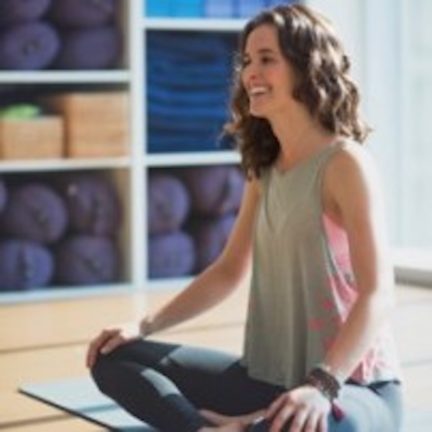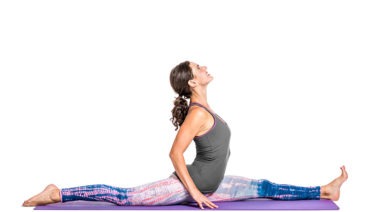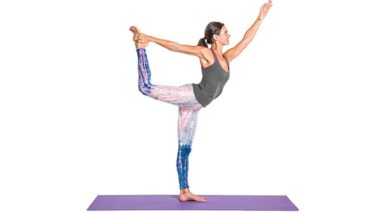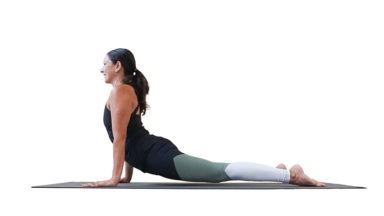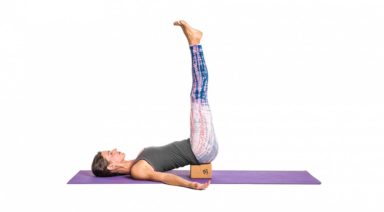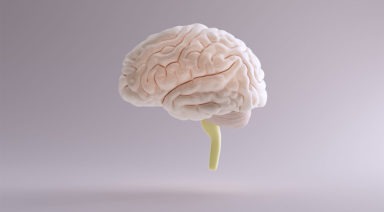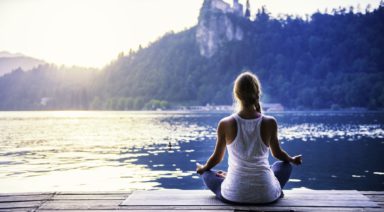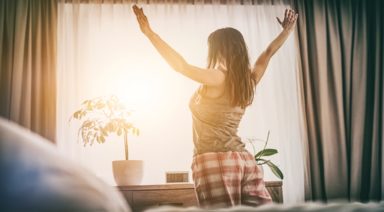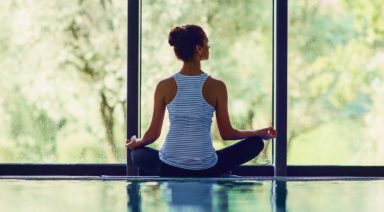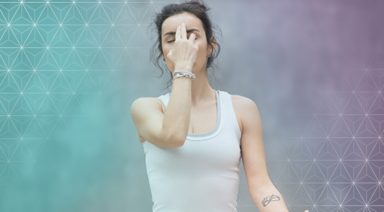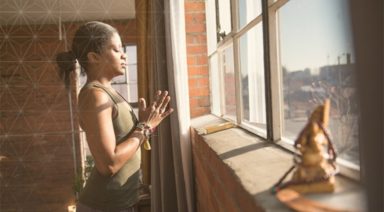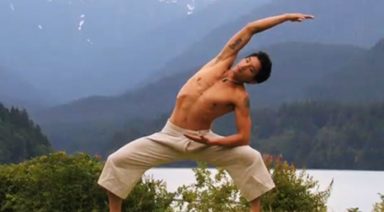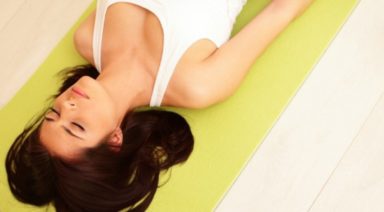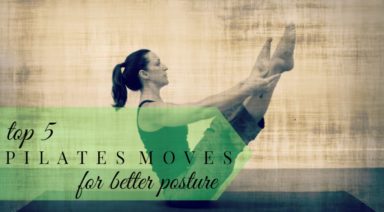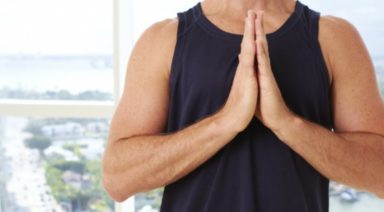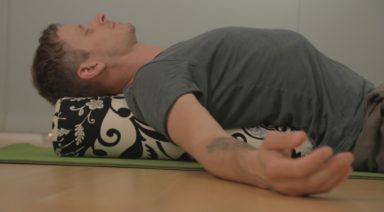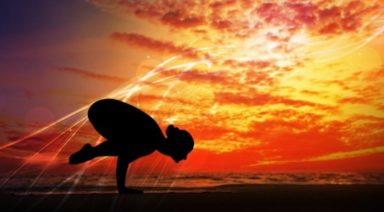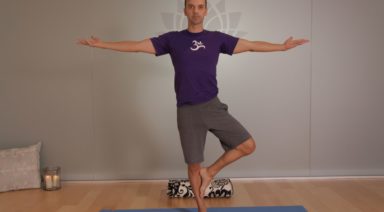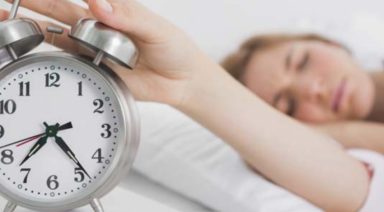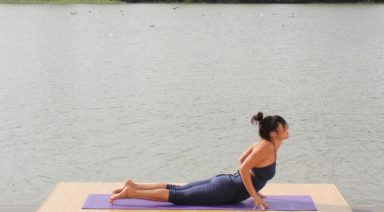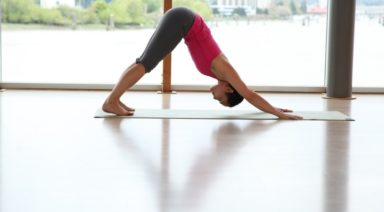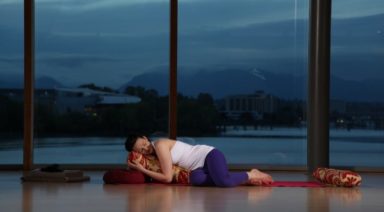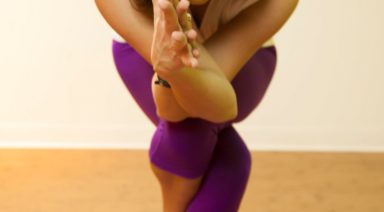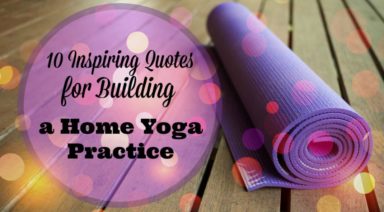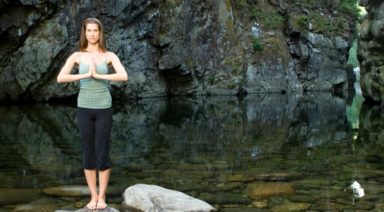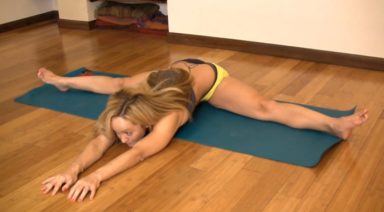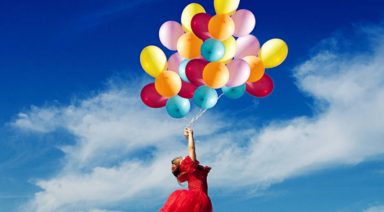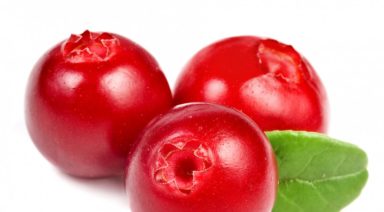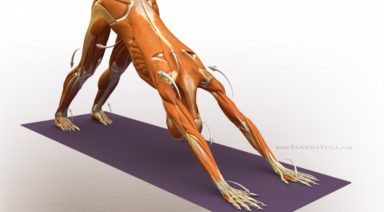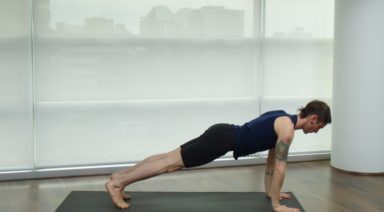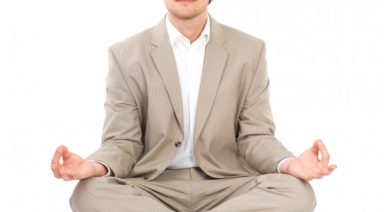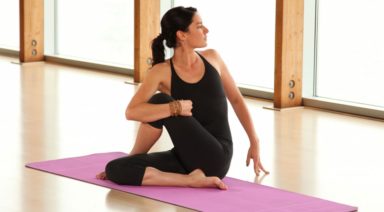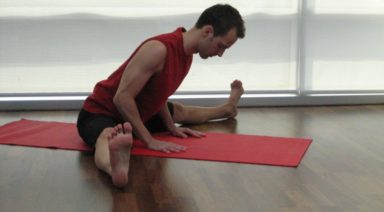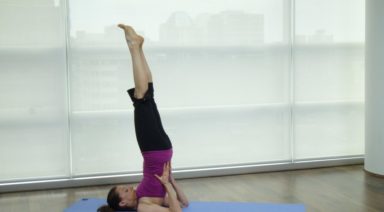Vinyasa Yoga Poses and Sequences
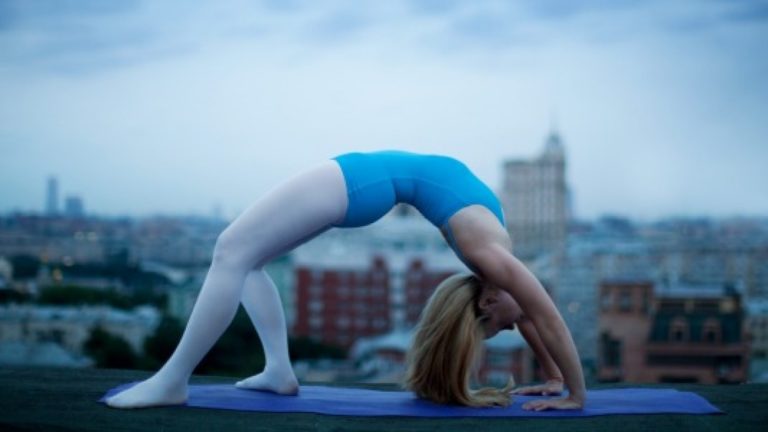
One of the most extolled qualities of Vinyasa Yoga is the ability to craft a unique practice that serves the individual. It is an open system of receptivity where the practitioner is invited to continually adjust the power, pace and purpose of their effort according to an intimate need. It is not a static experience willfully imposed on the body, but rather a co-creative movement modality that draws us closer to source Self. How? By integrating breath, body and mind into a singular experience of presence. At the very least, that is what Vinyasa Yoga can be.
Vinyasa Yoga in the West
Shiva Rea identifies the birth of Vinyasa Flow as, “a synthesis of Ashtanga and Iyengar yoga,” both influenced by Krishnamacharya, the grandfather of modern postural practice. Ashtanga, championed by Pattabhi Jois, is the somewhat rigid approach of practicing set sequences to the point of mastery with little modification. B.K.S. Iyengar, on the other hand, leveraged the use of props and adaptations to refine alignment for the individual such that Yoga could sustain all stages of life. Common to both disciplines are the principles of breath devotion, sequential progression and absolute intimacy prescribed by Krishnamacharya’s Tantric milieu.
Most Vinyasa Yoga classes being taught today are shaped in some way by these celebrated teachers and titans of yoga. Shiva Rea further explains the proliferation of Vinyasa Yoga in the west as an organic response to the symptomatic need for flow within a 21st century culture of disembodiment — the chronic disconnect between the physical body and the energetic body.
Non-Negotiables of Vinyasa Yoga
Having practiced and taught Yoga for several years, I consider the following to be my personal core values when it comes to vinyasa. These non-negotiables inform my home practice and teaching in every way.
Intimacy
The experience of vinyasa is personal, it is an opportunity to be self-full and self-aware. In his “Yoga of Heart: The Healing Power of Intimate Connection,” Mark Whitwell explains why, “We start with intimacy with our body and breath. This sensitivity to our own life develops into sensitivity to all of life. The principles of practice are the practical means to experience the intimacy of your natural state.”
Nourishment
Vinyasa Yoga can always be practiced in a way that nourishes the body. We must feed the body with breath, the mind with equanimity and the heart with intention. At the close of practice, it should feel as though the entire sequence could be completed again, without feeling fatigued or overworked. This can be achieved by attentively monitoring energy levels throughout a given practice, acknowledging the need for rest as well as the call to activate. Avoid negative inner dialogue and competition with fellow yogis, pausing often to evaluate the quality of the breath.
Breath
The breath is the boss in Vinyasa Yoga, breath movement and body movement are one. We must let go of the doing to allow for receiving which can be as simple as shifting the language we use to guide our experience. We don’t take a breath, for example, we are given a breath. We aren’t masters of breath, we are being breathed. As you enjoy the physical postures, tune into the natural rhythm of expansion fueled by the inhale and contraction supported by the exhale.
Fluidity
Vinyasa Yoga arises from an intrinsic personal freedom to breathe and move in the way that is most beneficial at any given time. To call once again upon the experiential wisdom of Shiva Rea who likens this quality to a river, “there is a direction to the flow but like a river, it is allowed to find its course.” In Sanskrit, this quality is called sahaja and illustrates the spontaneous response that arises within Vinyasa Yoga when we allow ourselves to be led by subtle body intuition. Whether or not the resulting movement bears any resemblance to a yoga pose.
Progression
There is a fundamental intelligence that directs any sequence, this tenet of vinyasa was taught by Krishnamacharya as Vinyasa Krama and will be discussed in more detail below. While the flow is spontaneous, the order is never random, every pose is selected on purpose to support the progression of the practice. The arc of any sequence evolves from beginning to middle to end and there are intricately woven layers of vinyasa embedded within the whole. Each breath cycle, for example, represents a complete vinyasa within the sacred arc of sadhana.
“Vinyasa isn’t so much a bunch of poses strung together as the intelligence that connects one moment, one breath, one action to the next.”
::Shiva Rea
Vinyasa Krama: Potential for Transformation
Krama is a Sanskrit word meaning, “the uninterrupted sequence of events from beginning to end.” It also invokes the imagery of a step or stage along a particular path. Vinyasa Krama is a method of yoga practice that builds every posture from the simplest form to most complex using the appropriate kramas or stages, prioritizing the primary benefits and key actions of each. As a sequence progresses, any hindrance to breath or alignment indicates key actions from the previous krama have not been integrated and additional preparation or rest is necessary. Only when a particular karma can be fully expressed with free and easy breath and without strain, should we proceed to the next. In this way, we maximize the potential for transformation without frustration, discouragement or worse, injury.
Vinyasa Krama Applied
Consider Adho Mukha Svanasana, Downward Facing Dog. This mild inversion includes the primary benefits of increasing circulation, elongating the spine, opening the back body and creating space in the heart region. To build this asana from kramas within the pose we might begin with knees on the earth, focusing on comfortably aligning the head below the heart with the arms extended and spine long. Next, we might lift the knees, but keep them bent to activate strength in the arms and shoulders while maintaining the integrity of the spine as we soften the back of the heart. Finally, we encourage the heels toward the mat to lengthen the backs of the legs and experience the lines of energy from the feet to the hips and from the hips to the hands. We might also build this posture from related preparatory poses that stretch the shoulders and the hamstrings like Urdhva Hastasana, Upward Hands and Uttanasana, Standing Forward Bend. This intelligent, purposeful ordering of asana, with each one receiving something from the previous and giving something to the next, is Vinyasa Krama.
“Vinyasa means a gradual progression or a step-by-step approach that systematically and appropriately takes a student from one point and safely lands them at the next point.”
::Maty Ezraty
Vinyasa as Sacred Sequence
Any sequence of yoga postures expressed with breath, intelligence and intention is vinyasa.
Familiar sequences like Surya Namaskara, meaning, “to give reverence to the sun,” provide the basic structure of Vinyasa Yoga and can be creatively adapted to meet any practice need. Listed below are a few of my favorite Vinyasa Yoga poses and sequences, each with a unique purpose and energetic effect. You’ll notice each sequence has a beginning, middle and end along with the corresponding breathwave. Please feel free to take as many breaths as you like in each posture according to your personal rhythm.
Surya Namaskar A
- Helps establish breath connected movement and increase circulation, can be used at the beginning of a practice to increase circulation or in the middle to reset the mind and body.
- Breaths 4-6 are often referred to as the “basic vinyasa” or a “connecting vinyasa” and are often used to transition from a standing posture to Adho Mukha Svanasana.
- If you find yourself lacking energy, experiencing stress or shortened breath, take a few moments to practice several rounds of this sequence omitting breaths 4-8.
Enter from Samastitihi
- [inhale] Urdhva Hastasana
- [exhale] Uttanasana
- [inhale] Ardha Uttanasana
- [exhale] Chaturanga Dandasana
- [inhale] Urdvha Mukha Svanasana
- [exhale] Adho Mukha Svanasana
- [inhale] Ardha Uttanasana
- [exhale] Uttanasana
- [inhale] Urdhva Hastasana
- [exhale] Samastitihi
*Repeat as many rounds as desired for circulation and heating
Standing Balance
- Practice between standing sequences or after warming the body to open the inner and outer hips
- Cultivates single-leg balance and focus
- Use this vinyasa as a preparatory wave before entering Baddha Parsvakonasana, Baddha Trikonasana, or Svarga Dvijasana
Enter from Samastitihi
- [inhale] Urdhva Hastasana
- [exhale] Eka Pada Tadasana, clasp foot or big toe
- [inhale/exhale] Utthita Hasta Padangusthasana A
- [inhale] Utthita Hasta Padangusthasana B (open hip)
- [exhale] Vrksasana w/ Anjali Mudra
- [inhale] Arms Reach Up
- [exhale] Eka Pada Utkatasana w/ Anjali Mudra
- [inhale/exhale] Garudasana
- [inhale] Eka Pada Tadasana
- [exhale] Samastitihi
*Repeat on second side
Half Mandala Surrender
- Ideal for a final wave of practice to cultivate the inner arts and prepare for meditation or final relaxation
- Move into deeper hip opening and enjoy as many long, slow breaths as possible in each pose.
- I love to practice this sequence before Savasana, taking final rest facing the opposite direction to invoke lunar energy
Enter from Lunge
- [exhale] Urdhva Prasarita Eka Padasana
- [inhale] Prepare, lengthen spine
- [exhale] Gomukhasana (back leg tucks behind front)
- [inhale/exhale] Ardha Matsyendrasana
- [inhale/exhale] Agni Stambasana
- [inhale/exhale] Ardha Kapotasana (take top leg back)
- [inhale/exhale] Janu sirsasana (side bend over extended leg)
- [inhale/exhale] Upavistha Konasana
- [inhale/exhale] Janu sirsasana (side bend) side 2
- [inhale/exhale] Ardha Kapotasana side 2 facing back of mat
- [inhale/exhale] Agni Stambasana (bring back leg forward)
- [inhale/exhale] Ardha Matsyendrasana
- [inhale/exhale] Gomukhasana
- [inhale] Release Gomukhasana Arms
- [exhale] Urdhva Prasarita Eka Padasana
- [inhale/exhale] Lunge
*Exit through Adho Mukha Svanasana or step forward to Uttanasana
Energizing Solar Sequence
- Ideal for mid-morning or early afternoon practice during seasons of increasing light (full moon, springtime)
- Increases heart rate for circulation and heating to prepare the body for practice
- Simple movements help regulate breath and synchronize with movement
- Helps shift from intellectual thinking to intuitive thinking by repeating similar patterns of cyclical movement
Enter from Adho Mukha Svanasana
- [inhale] Eka Pada Adho Mukha Svanasana
- [exhale] Lunge
- [inhale] Crescent Lunge (arms up)
- [exhale] Leaning Lunge (arms back, torso forward)
- [inhale] Eka Pada Tadasana (arms up)
- [exhale] Virabhadrasana III (arms back)
- [inhale] Crescent Lunge (arms up)
- [exhale] Lunge, hop to switch legs
*Repeat on second side and continue for as many rounds as desired
Basic Mandala Sequence
- Mandalas are generally more fluid than traditional forward facing sequences which can stimulate creativity and meditative flow
- The structure can be modified as desired to support any physical focus by practicing postures that follow the basic pattern, asymmetrical > symmetrical > asymmetrical opposite side
Enter from Adho Mukha Svanasana
- [inhale] Eka Pada Adho Mukha Svanasana (initial with right leg for solar energy, left for lunar)
- [exhale] Lunge or other closed-hip, split-leg standing asana (Virabhadrasana I, Crescent or Anjaneyasana)
- [inhale/exhale] Utthan Pristhasana
- [inhale] Turn to long edge of mat
- [exhale] Prasarita Padottanasana variation or other symmetrical standing asana (Utkata Konasana, Transverse Lunge variations or 5-pointed Star)
- [inhale] Turn to back of mat
- [exhale] Utthan Pristhasana
- [inhale/exhale] Lunge (second side) or other closed-hip, split-leg standing asana
- [inhale] Eka Pada Adho Mukha Svanasana
- [exhale] Adho Mukha Svanasana
*Complete the mandala by repeating the same sequence starting with the same leg. To neutralize energy, begin a new mandala with the opposite leg to complete the circle in the opposite direction.
Swimming Dolphin Sequence
- Gentle preparation for heart opening and strengthening practice
- Increases circulation in the heart region
- Coordinates movement with breath
- Perfect for early stages of practice or in lieu of more vigorous solar salutations to warm the bodily systems
Enter from Adho Mukha Svanasana
- [inhale] Bharmanasana
- [exhale] Lower Forearms
- [inhale] Dolphin
- [exhale] Lower Knees
- [inhale] Bharmanasana
- [exhale] Adho Mukha Svanasana
*Circulate as many rounds as desired
Hanumanasana: Front Splits Pose
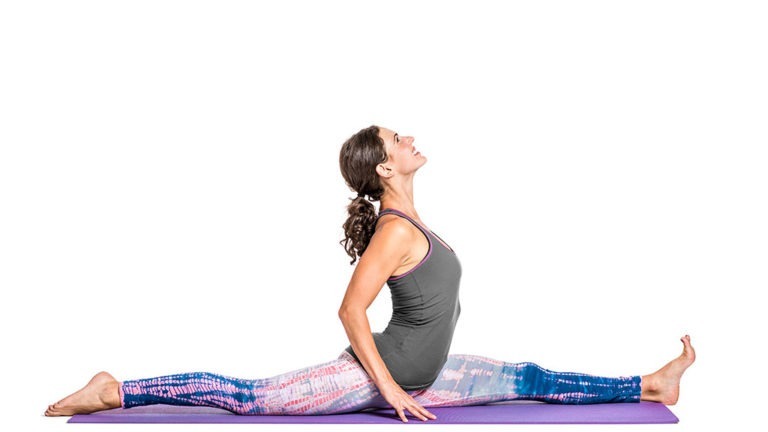
ADJUSTMENTS | BENEFITS | SEQUENCING | SANSKRIT | STEPS
Hanumanasana (hah-new-mahn-AHS-ah-nah) honors the great leap made by Hanuman, the famous monkey god from the Ramayana, across the ocean from India to the mountains of Sri Lanka. Front splits pose demands flexibility, strength, and stability.
Philosophy + Origin
More than just an incredible leap, Hanuman is remembered, celebrated, and worshiped because of his great devotion and courage. To be devoted, one must be bold enough to stand firmly in their beliefs, selflessly serving others and putting others’ needs above their own.
Because of its physical demands, it’s easy to get caught up in “achieving” the outward appearance of the posture. As such, it’s important to keep your ego in check as you dedicate yourself to the posture. Above all, invite kindness and selflessness to flow freely from the posture. As you practice, ask yourself how you can embody Hanuman’s devotion both in your physical yoga practice and your everyday life.

